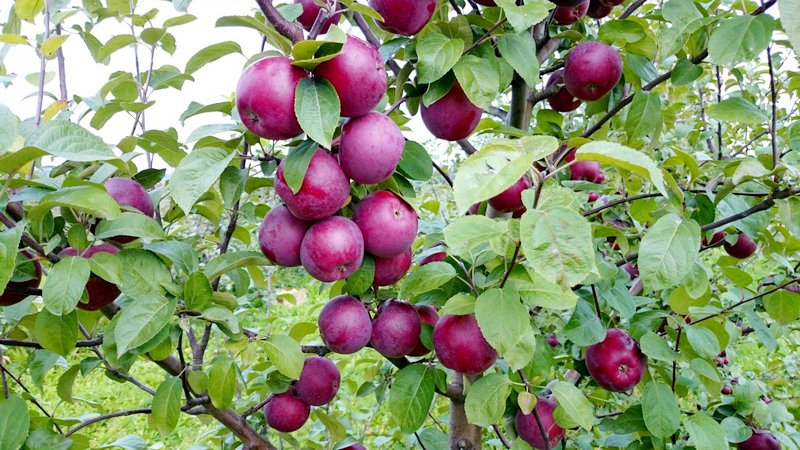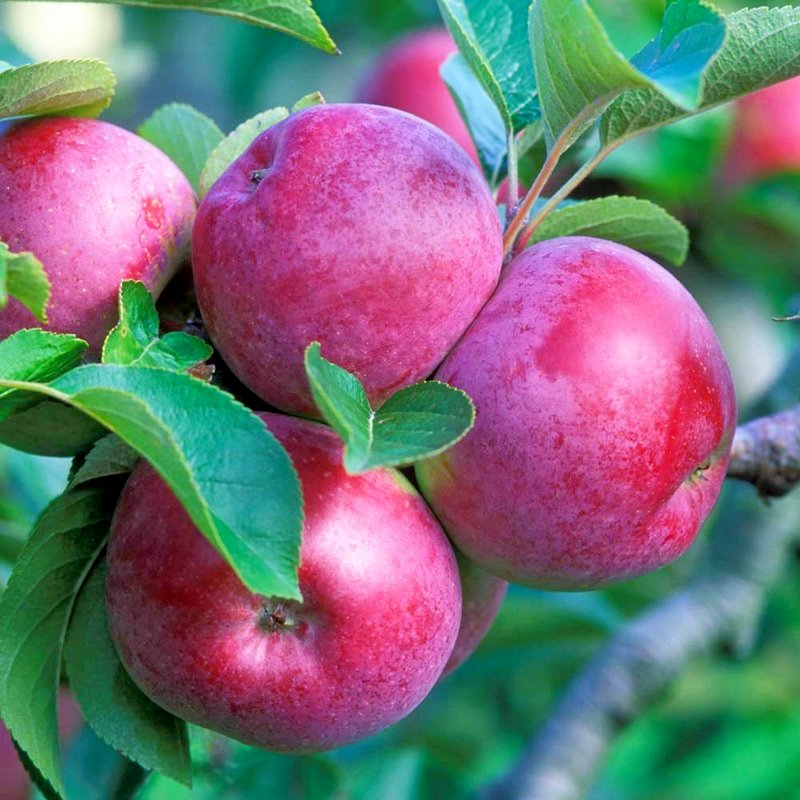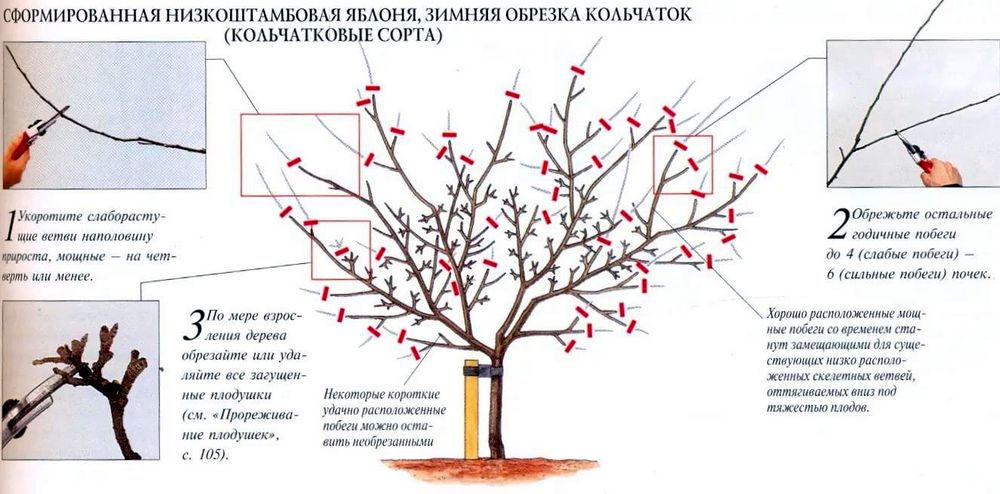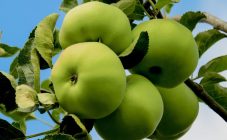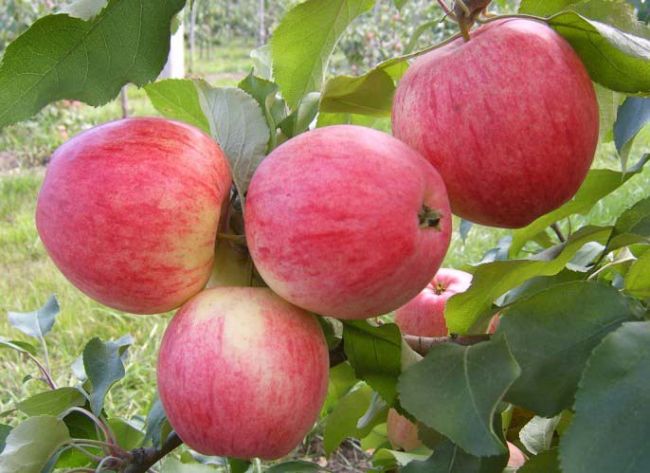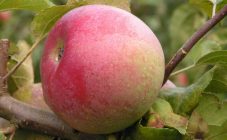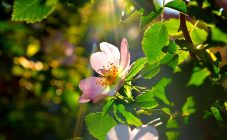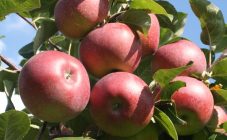Content:
Even novice gardeners strive to supply their plot with fruit trees with tasty fruits. The apple tree is one of the most common horticultural crops and is grown on a huge scale. Through breeding, a huge variety of varieties have been produced, designed for climatic conditions dissimilar to each other.
In the latitudes of central Russia, as a rule, trees grow that do not require undue attention to themselves and painstaking care. Despite the great variety of varieties of domestic varieties, every gardener dreams of foreign selection. Among the latest varieties that are imported from abroad, the Spartan apple variety can be distinguished.
Description of the Spartan variety
The Spartan apple tree was bred in 1926 by breeders in Canada by crossing Macintosh and Penin Newtown Yellow. The variety was brought to Russia in 1986. The key goal was the urgent need to grow apple trees on an industrial scale, which is why Spartan apples are endowed with an excellent presentation, excellent taste, transportability and a long shelf life. The variety is considered fast growing and high yielding.
The fruiting period begins in the apple tree from the 3rd year of life and falls in the very middle of autumn, therefore, the variety is classified as late. On average, a young Spartan (up to 10 years old) can bring from 15 to 35 kg of ripe and tasty fruits, more mature individuals are able to give up to 80 kg in the high season. Ripe apples can stick to the branches for a long time after ripening. The winter apple tree Spartan is self-pollinated.
The apple tree Spartan is distinguished by its rapid growth, but at the same time the adult plant does not reach a great height (about 5-6 m). The leaves are mostly small and medium in size, deep green in color, smooth and shiny with slightly curled edges towards the top, endowed with a relief surface. The branches are at a 70 ° angle to the trunk. The crown of the tree is unusually lush, prone to the emergence of a large number of unnecessary shoots (as a rule, they are slightly lowered down and endowed with a maroon shade).
The characteristic features of the tree structure signal that gardeners should not forget and skip the apple pruning procedures. The largest number of fruits is formed on the ringlets. Often, apples are round and slightly flattened, but conical specimens can be found. Due to its Canadian origin, the fruit has a rich cherry color that distinguishes it from other varieties.
Initially, apples have a yellow tint, but as they ripen, bright burgundy spots with a purple tint begin to appear in the fruits, which slowly but surely begin to completely cover the entire surface of the fruit. Among other things, apples have a waxy coating, which gives them a very attractive presentation. Fully ripe fruits are not particularly large in size: their weight varies from 130 to 190 g. The apples taste very sweet, dessert, with a subtle hint of sourness, juicy, give off a pleasant aroma, endowed with dense white pulp with almost imperceptible reddish veins. The taste of the fruit is similar to the composition of strawberry and melon.Apple fruits should be stored in refrigerators, cellars, cellars so that they retain their external and taste qualities as long as possible, and are also full of vitamins.
The description of the Spartan apple tree indicates that it is a self-fertile crop, and also often independently acts as a pollinator for fruit trees growing nearby: Melba, Kitayka. The flowering of the plant is abundant and very lush, planting next to other varieties can increase its yield.
Advantages and disadvantages of the variety
Among the primary advantages of the Spartan variety are the following:
- regular fruiting from year to year;
- excellent taste and attractive external characteristics provide a chance to put the variety for sale;
- excellent transportability;
- storage duration (fruits can lie for six months);
- the Spartan apple tree is self-pollinated, and also belongs to pollinating varieties;
- ripe fruits produce delicious jam and preserves, compote, juice, jelly and even marmalade;
- resistance to "apple" diseases (scab, powdery mildew) and pest attacks.
Among the disadvantages of the variety, gardeners distinguish:
- very weak frost resistance (a tree that is not properly prepared for the cold can easily die);
- poor drought tolerance;
- an adult plant bears fruit with small apples;
- the need for constant pruning.
Key conditions for planting and care
Thinking about choosing a place for planting a columnar apple Spartan, you should pay attention to the following criteria:
- the area should be bright, well-lit by sunlight, otherwise the amount of the harvest may decrease tenfold;
- the soil on the site must be fertile;
- in no case is it recommended to allow excessive moisture of the rhizome. For this reason, it is worth staying as far away as possible from places with a high groundwater content.
The most favorable time for planting a young Spartan apple tree is mid-spring or early autumn. It is worth approaching the planting of a seedling responsibly, having prepared a hole in a week so that it can brew. Young Spartan prefers loamy soils, therefore, striving to create the most comfortable conditions for the growth and development of a tree, add to clay soil:
- sand;
- peat;
- compost.
The sequence of work when planting a plant in open ground:
- The distance between the holes should not be less than 4 m, and the depth should vary from 50 to 60 cm.
- Approximately 30 cm of the bottom should be loosened.
- To save the apple tree from the appearance of excessive moisture and the accumulation of water in the pit, drainage is laid at its bottom. It can consist of absolutely any components that are at hand (for example, stones or cut shoots).
- After completing work that relates to protecting the tree from moisture, the pit should be covered with a layer of fertile soil, then fertilizers (ash, compost, superphosphate) are applied.
- After the completion of the procedure, the previously dug earth is poured into the pit. By adding drainage and fertilizers, a mound appears at the planting site, into which it is necessary to stick a peg, which will serve as the basis for the seedling that has not yet gained strength.
- During planting, the plant is carefully placed on a mound and sprinkled with a layer of fertile soil in such a way that the neck rises 5 cm above the soil level.
For a good tree development, there are several important details to pay attention to:
- in summer, the plant needs regular moisture through the rain method.In hot weather, experts advise to water at least twice a week (also at such times they practice drip humidification);
- in order for the root system to be enriched with oxygen, you need to periodically loosen the trunk circle.
One tree requires 20-30 liters of water; watering is necessary in the evening as the soil dries up. If there is an abundant amount of precipitation during the season, then the apple tree does not need additional watering, it will be enough just to make several punctures around the trunk with a depth not exceeding 40 cm.
Growing the Spartan apple tree, you need to pay considerable attention to pruning the tree. As a rule, this procedure is carried out in the spring, when the tree has not yet entered the flowering phase.
In the first year of life, the apical bud and all extraneous shoots located on it must be removed. To prevent the branches from becoming brittle, breaking off or tilting during fruiting, it is required to leave two symmetrical lateral shoots. Gardeners, forming the crown of the tree, place a key emphasis on lateral growth of branches. This is necessary in order to increase their diameter and, of course, make the apple tree as a whole stable.
The Spartan apple tree perfectly can take its own niche on the site of each gardener. Proper and competent care will be able to reward a decent harvest of tasty and juicy fruits that will be stored for a long time.
